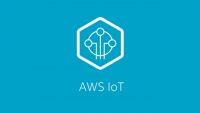AWS Previews Alexa Voice Integration For More IoT Devices
December 2, 2019
At its annual AWS re:Invent conference, Amazon previewed some new products for its cloud platform, Amazon Web Services, most of which related to the Internet of Things, a market expected to be valued at $212 billion by the end of 2019. It’s a natural fit, since, according to a 2018 survey by the Eclipse Foundation, AWS is the most popular cloud platform for IoT developers, growing from 21 percent in 2017 to 51.8 percent today. In comparison, Microsoft Azure’s share is 31.21 percent today, up from 17 percent in 2017.
VentureBeat reports that Amazon chief technology officer Werner Vogels stated that, “AWS customers deploy upwards of hundreds of thousands of sensors.” The first sneak peek was of Alexa Voice Service (AVS) integration for AWS IoT Core, which enables manufacturers to “create Alexa built-in devices — or accessories that connect to Alexa to play music, control smart home devices, and more — with constrained hardware resources.”

Previously, such built-in devices required “at least 100MB of RAM and Arm Cortex A-class microprocessors.” Now, with new “AWS cloud processing components that offload tasks like buffering and mixing audio,” that requirement has been “reduced to 1MB of RAM and Arm Cortex M-class microcontrollers.”
More specifically, AVS Integration for AWS IoT Core “offloads media retrieval, audio decoding, audio mixing, and state management to a new virtual Alexa-built in device in the cloud” and allows “message transfer between devices connected to AWS IoT Core and AVS using the MQTT protocol … as well as interfacing with device microphones and speakers and managing device-side state, all on the same IoT Core connection.”
According to Amazon, this new feature “can lower the materials costs associated with Alexa built-in devices by up to 50 percent, and bring Alexa to products like light switches, thermostats, and small appliances.”
Also teased were improvements to IoT Greengrass, an Amazon service that “extends AWS to edge devices so they can act locally on the data they generate while using the cloud for management.”
IoT Greengrass will provide “interoperability with the existing Docker ecosystem, allowing customers to package apps into a Docker container image and deploy it to a device” and will offer “a new data stream capability that collects, processes, and exports streams from devices … eliminating the need for developers to handle their own data stream management.”
The AWS IoT Core Fleet Provisioning service will automatically set up devices with unique identities and perform the client- and cloud-side configuration so devices can operate with AWS IoT upon connection.
Lastly, a secure tunneling for AWS IoT Device Management is a “capability that allows the creation of a … secure remote communications session between two devices.” That will allow app developers to “build remote access solutions that provide connectivity to individual devices for troubleshooting purposes, and connect to devices deployed behind restricted firewalls or isolated control networks without the need to adjust firewall configuration settings or manage proxies for each network user.”

No Comments Yet
You can be the first to comment!
Sorry, comments for this entry are closed at this time.